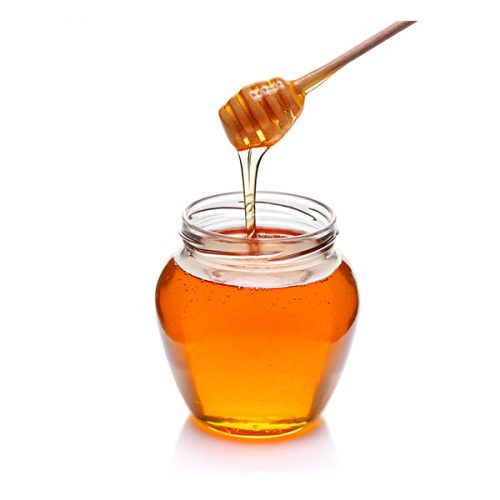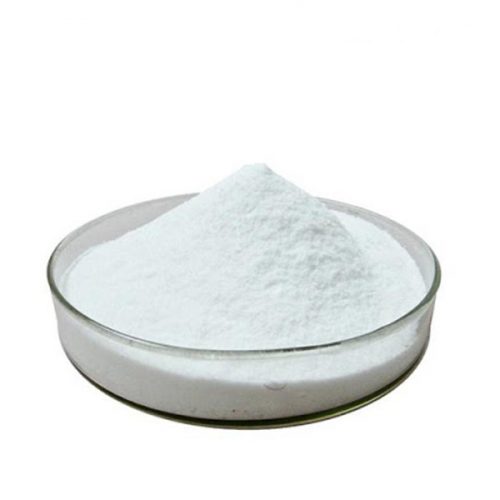Honey
Honey is a thick, golden liquid produced by industrious bees; it is made using the nectar of flowering plants and is saved inside the beehive. It contains antioxidants, antifungal and antibacterial properties.
Benefits
Raw honey helps balance the bacteria on your skin, which makes it a great product to use for acne. Honey speeds up your skin cells' healing processes.It helps to reduce inflammations such as blemishes or eczema outbreak.
Raw honey is also a natural exfoliator, it helps to take off dry, dull skin and reveals new skin cells underneath. It lightens dark spots and gives you a brighter skin.
Hyaluronic Acid
Hyaluronic acid (HA) is a sugar found naturally in our skin that holds water and helps keep it hydrated and plump.The largest amounts of it are found in your skin, connective tissue and eyes.
When used in skin care products like creams and serums, hyaluronic acid brings moisture to the surface of your skin. “Because of its ability to draw and hold water, it can be used as a humectant in your skin care regimen.
Benefits
Hyaluronic acid helps to increase skin moisture and reduce the appearance of fine lines and wrinkles. It can also soothe redness and dermatitis. It helps to alleviate dry skin.
Hydrogen Peroxide
Hydrogen peroxide in its pure form, is a very pale blue liquid, slightly more viscous than water. It is used as an oxidizer, bleaching agent, and antiseptic.
It is unstable and slowly decomposes in the presence of light. Because of its instability, hydrogen peroxide is typically stored with a stabilizer in a weakly acidic solution in a dark-colored bottle.
Benefits
Hydrogen peroxide is a mild antiseptic used on the skin to prevent infection of minor cuts and bruises; it helps to heal the wound and lighten the marks and discoloration left behind.
Hydrogen peroxide is used to effectively treat blackheads and whiteheads.
Hydrogen peroxide is also used as a disinfectant or bleach.
Kojic Acid
Kojic acid is made from several different types of fungi. It’s also a byproduct when certain foods ferment, like soy sauce and rice wine.
Kojic acid inhibits and prevents the formation of tyrosine, which is an amino acid that’s needed to produce melanin. Melanin is the pigment that affects hair, skin, and eye color. Because it inhibits the production of melanin, kojic acid can have a lightening effect.
Benefits
Kojic acid is most often used as a skin-lightening agent. It can be found in a number of different types of cosmetic products, including powders, serums, creams, cleansers, and soaps.
In addition to skin-lightening effects, kojic acid also contains some antimicrobial properties which help to treat acne caused by bacteria in the skin. It may also lighten scars from acne that haven’t faded yet.
It may be useful in treating fungal infections of the skin like yeast infections, ringworm or athlete’s foot.
L-ascorbic Acid
L-ascorbic acid is the chemically active form of Vitamin C. It is used in skin care products for de-pigmentation. It is also used to address aging skin and stretch marks.
L-ascorbic acid is found in fruits and vegetables such as oranges, broccoli, leafy greens, grapefruit, and peppers; they are a great source of dietary vitamin C.
Benefits
L-ascorbic acid as an antioxidants helps to slow deterioration caused by exposure to air and also to control the pH of finished products.
Lactic Acid
Lactic acid is a chemical that is produced via fermentation. The commonly used feed stocks are carbohydrates obtained from different sources like corn starch, sugarcane, or tapioca starch. The carbohydrates are hydrolyzed into monosaccharaides and then fermented under the absence of oxygen by microorganisms into lactic acid. Lactic acid is the building block for polylactic acid and is widely used in cosmetic applications.
Benefits
Lactic acid helps to stimulate collagen production and promote cellular renewal by getting rid of the dead skin cells. It also helps to brighten a dull complexion and reduce discoloration on the skin. Lactic acid can help to improve the skin's texture and reduce the appearance of fine lines and wrinkle.
Licorice
Licorice is the common name of Glycyrrhiza glabra, a flowering plant of the bean family Fabaceae, from the root of which a sweet, aromatic flavouring can be extracted.
Benefits
Licorice extract inhibits the production of tyrosinase, in turn inhibiting the production of dark spots. Licorice contains liquiritin an active compound that helps to disperse and remove excess melanin and also brightens the skin. Licorice helps to control oil production in the skin. It is often used to treat dandruff.
Lye Caustic Potash
Potassium Hydroxide (KOH), also known as lye, is an essential ingredient in the liquid soap making process. When potassium hydroxide beads or flakes are mixed with a liquid, a lye solution is created. This solution, when mixed with fats and oils, will cause a chemical reaction called saponification.
Lye Caustic Soda
Sodium Hydroxide. Sodium Hydroxide (NaOH), also known as lye, is an essential ingredient in the bar soap making process. When sodium hydroxide beads or flakes are mixed with a liquid, a lye solution is created. This solution, when mixed with fats and oils, will cause a chemical reaction called saponification.
Methylated Spirit
Methylated spirits is a clear, colourless liquid that is commonly used across most industrial industries. Methylated spirits is often referred to as denatured alcohol which means that it contains a denaturant in it so it cannot be consumed.
Benefits
Methylated spirit can be used as a disinfectant, sterilizer and so on. It is found in a lot of cosmetics such as toners and makeup brush cleaners.










